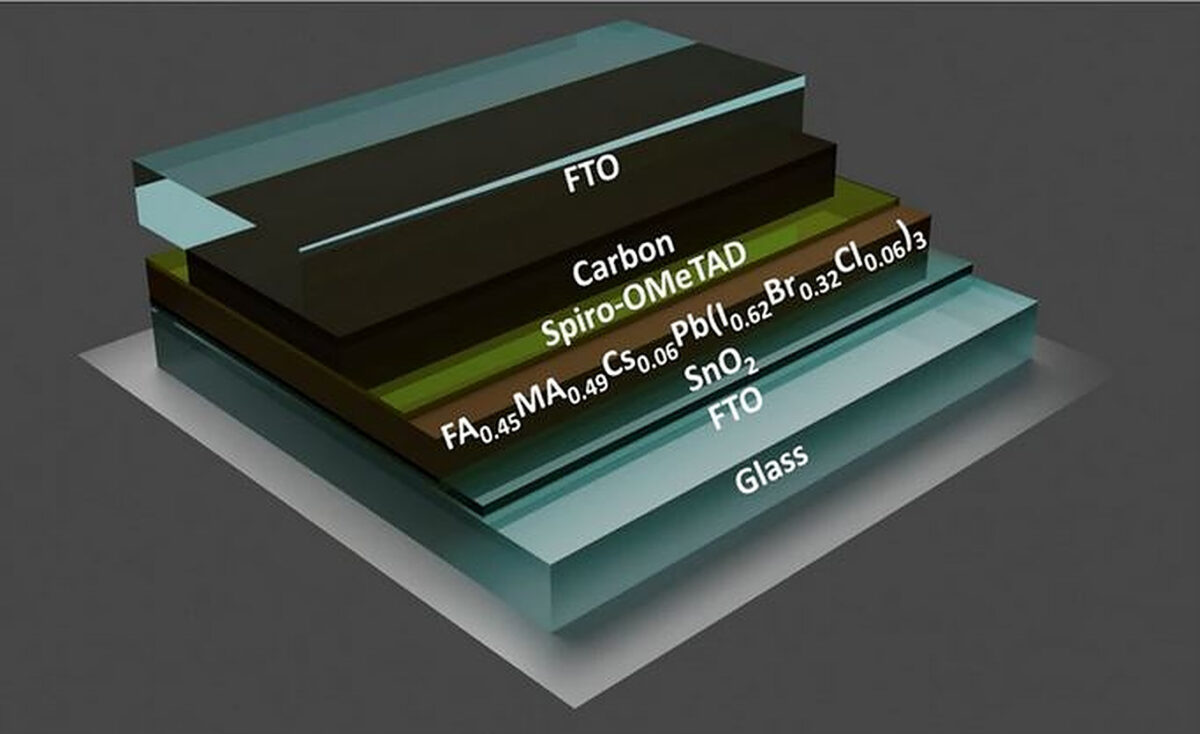Scientists at the Mahidol University in Thailand have developed triple-cation perovskite solar cells for low-light applications using a manufacturing process based on antisolvent deposition and vacuum thermal annealing (VTA).
“VTA leads to compact, dense, and hard morphology while suppressing trap states at surfaces and grain boundaries, which are key culprits for exciton losses,” they stated, emphasizing the importance of the second step to produce a high quality perovskite layer. “As indoor light intensity is at least 300 times lower than that of sunlight, dense and homogeneous perovskite formation enticed by vacuum thermal annealing is valuable.”
The researchers implemented the process via a vacuum flask connected to a vacuum pump with controllable pressure and located on top of a hotplate to regulate the temperature. They used a perovskite material known as FA0.45MA0.49Cs0.06Pb(I0.62Br0.32Cl0.06)3 treated with bromide and chloride. After the treatment, its energy bandgap was 1.80 eV.
They built the cell with a substrate made of fluorine-doped tin oxide (FTO), an electron transport layer (ETL) based on tin(IV) oxide (SnO2), the perovskite absorber, a hole transporting layer (HTL) made of Spiro-OMeTAD, a carbon top electrode, and another FTO layer. The device has an active area of 0.04 cm2.
Tested under indoor light at 1000 lux, the cell showed a power conversion efficiency of 27.7%, an open-circuit voltage of 0.93 V, and a short-circuit current of 0.16 mA/cm2, with peak efficiency reaching up to 32.0%. A reference device without VTA treatment achieved an efficiency of 25.5%, an open-circuit voltage of 0.91 V, and a short-circuit current of of 0.16 mA/cm2, with peak efficiency reaching 30.7%.
“VTA leads to reduced surface roughness and electronic traps both at the bulk and the surface,” the group said referring to the superior performance of the VTA-based cell. “VTA opens doors for robust perovskite formation and could practically be adapted for various perovskite compositions towards desirable optoelectronic applications for modern society.”
The solar cell is introduced in the study “Robust perovskite formation via vacuum thermal annealing for indoor perovskite solar cells,” published in Scientific Reports.
This content is protected by copyright and may not be reused. If you want to cooperate with us and would like to reuse some of our content, please contact: editors@pv-magazine.com.









What is RR# (Recycling Rating Number..) for these PV Cells… If they cannot be (mostly) recycled.. and their materials re-used… then they are worth.. NOTHING.. !!!